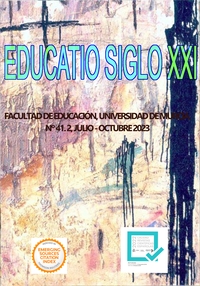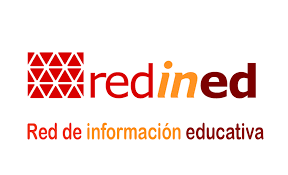Problem-Based Learning as a strategy for monitoring competencies in graduation profiles. An experience in Civil Engineering at the University of Valparaíso
Abstract
Designing and developing training processes that start from the analysis of contextualized problems is the purpose of Problem-Based Learning (PBL), an interesting methodology in Engineering careers to achieve meaningful learning. The general purpose of this article was to present the implementation of the PBL in the Resistance of Materials subject in the Civil Engineering degree at the University of Valparaíso, in three different years. This was a strategy to evaluate and provide feedback on learning results regarding specific and generic competences, in their first level of mastery. The results revealed that this methodology had strengths and weaknesses regarding the level of achievement in team work-related transversal competences, self-regulation, and communication. Also, there was a rise in engineering competencies such as the application of tools for the analysis of a problem. The perception of the students regarding learning gains was also analysed and contrasted with their academic results. This provided feedback on students’ performance which the permanent curricular committee of the degree can use to make decisions and carry out macro or micro curricular adjustments. In general, improvements were reported for the formation of work teams, thus optimizing academic performance.
Downloads
-
Abstract1395
-
PDF (Español (España))810
References
Angelo, T., & Cross, K. (1993). Classroom Assessment Techniques: A Handbook for College Teachers (2nd Ed.). Jossey-Bass.
Bará, J. (2003). Aprendizaje basado en problemas/proyectos: ¿Qué, por qué, cómo? Institut de Ciencies de l¨Educació.
Cabrera, F. (2003). Evaluación de la formación. (1° ed.). Síntesis.
Comisión Nacional de Acreditación (2015). Normas y Procedimientos. Acreditación de Pregrado. Recuperado de: https://www.cnachile.cl/Criterios%20y%20Procedimientos/DJ%20009-4%20Criterios.pdf.
Galeana, L. (2006). Aprendizaje Basado en Proyectos. Revista electrónica Ceupromed. http://ceupromed.ucol.mx/revista/PdfArt/1/27.pdf.
Galvis, R. (2007). De un Perfil Docente Tradicional a un Perfil Docente Basado en Competencias, Acción Pedagógica, 16(1), 48-57.
Gibbs, G. (2003). Uso estratégico de la evaluación en el aprendizaje. En S. Brown, & A. Glasner (eds.), Evaluar en la universidad. Problemas y nuevos enfoques (pp. 61-75). Narcea.
Hernández R., Fernández C., & Baptista P. (2014). Metodología de la Investigación (6ta Edición ed.). McGraw Hill.
Jenkins, H. y Lackey, L. (2005). "Preparación de estudiantes de ingeniería para trabajar en equipo a través de proyectos de diseño de alto nivel", IPCC 2005. Actas. Conferencia Internacional de Comunicación Profesional, págs. 129-136, http://doi.org/10.1109 / IPCC.2005.1494169.
Menéndez, J.M. (2003). Aprendizaje por proyectos: la experiencia en la Universidad de Castilla-La Mancha. Actas del I Encuentro Internacional de Enseñanza de la Ingeniería Civil. Universidad de Castilla-La Mancha. CD-Rom. Universidad de Castilla la Mancha.
Navarro, N., Illescas, M. y Cabezas, M. (2009). Aprendizaje basado en problemas multiprofesional: Estudio cualitativo desde la perspectiva de los tutores. Revista Médica de Chile, 137 (2), 246-254. http://doi.org/10.4067/S0034-98872009000200009.
Palomba, C. y Banta, T.W. (1999). Assessment Essentials: Planning, Implementing, and Improving Assessment in Higher Education. Jossey-Bass, Inc.
Pérez, A., Serrano, J., Peñarrocha, I., y Pérez, E. (2008). Un sistema para la evaluación del aprendizaje basado en proyectos. Actas del XVI CUIEET. Cádiz.
Salgado, F., Corrales, J., Muñoz, L. y Delgado, J. (2012). Diseño de programas de asignaturas basados en competencias y su aplicación en la Universidad del Bío-Bío, Santiago de Chile. Ingeniare. Revista Chilena de Ingeniería, 20 (2), 267-278.
Salinas-Fernández, B., & Cotillas-Alandı, C. (2007). La evaluación de los estudiantes en la Educación Superior. Servei de Formació Permanent, Universidad de Valencia.
Schmal, R. (2012). Reflexiones en torno a un programa para la formación de competencias transversales en ingeniería. Ciencia, Docencia y Tecnología, 44(1), 239–262. Disponible en: https://www.redalyc.org/articulo.oa?id=14523080009.
Stufflebeam, D, & Shinkfield, A. (1987). Evaluación sistemática. Guía teórica y práctica. Paidós-MEC.
Tippelt, R., y Lindemann, H. (2001). El método de proyectos. El Salvador. Recuperado de: http://www.halinco.de/html/doces/Metproy-APREMAT092001.pdf
Tobón, S. (2006 b). Aspectos básicos de la formación basada en competencias. Talca: Proyecto Mecesup. Rescatado de: https://www.uv.mx/rmipe/files/2019/07/Aspectos-basicos-de-la-formacion-basada-en-competencias.pdf
Universidad de Valparaíso (2012). Proyecto Educativo UV. Disponible en: http://divacad.uv.cl/descargas/proyecto_educativo.pdf.
Copyright (c) 2023 Servicio de Publicaciones de la Universidad de Murcia

This work is licensed under a Creative Commons Attribution-NonCommercial-NoDerivatives 4.0 International License.
Original work publishes in this journal is subject to the following terms:
1. Murcia University Press (the publishing house) holds the copyright of the publishes work, and favours and allows their reutilization under the use license stated in point 2.
© Servicio de Publicaciones, Universidad de Murcia, 2015
2. Work is published in the electronic edition under a license (Creative Commons Reconocimiento-NoComercial-SinObraDerivada 4.0 España (legal text). They can be copied, used, disseminated, transmitted and publicly presented, as long as: i) authorship and original publication source is acknowledged (journal, publishing house and URL of the work); ii) are not used for commercial purposes; iii) the existence and specifications of this use license is stated.
3. Conditions for self-archive. Authors are allowed and encouraged to disseminate electronically the pre-pint (before review) and/or post-print (accepted for publication) versions of their work before their publication since that favours earlier circulation and dissemination resulting in an increased chance for the authors to be cited and for the work to reach a bigger share of the academic community. Colour: RoMEO: green.







